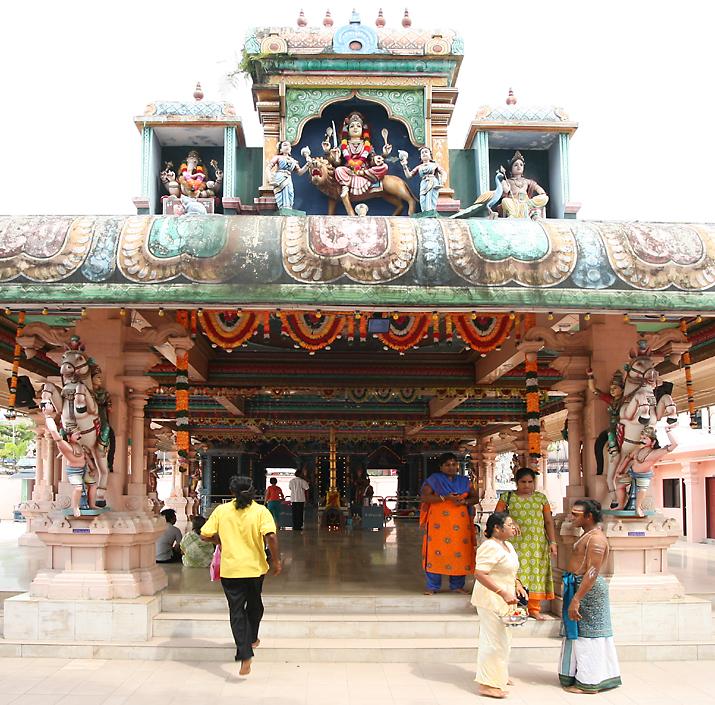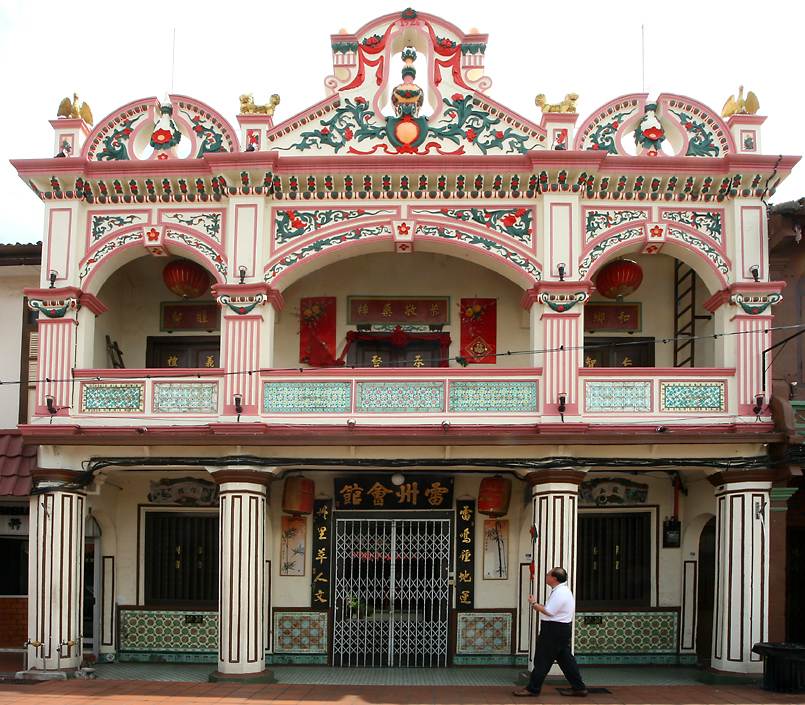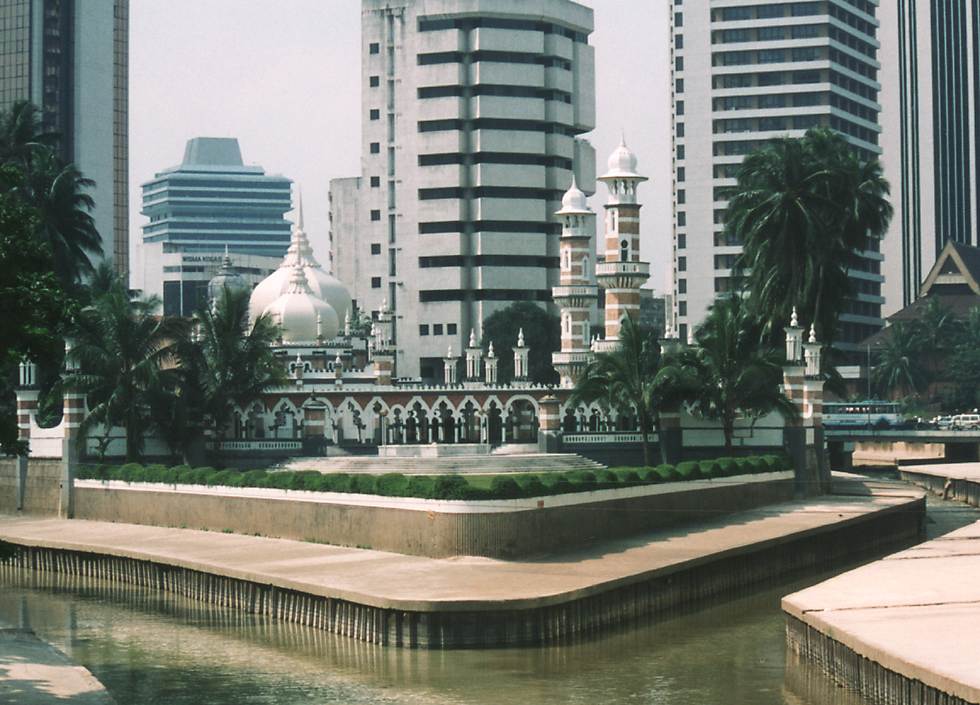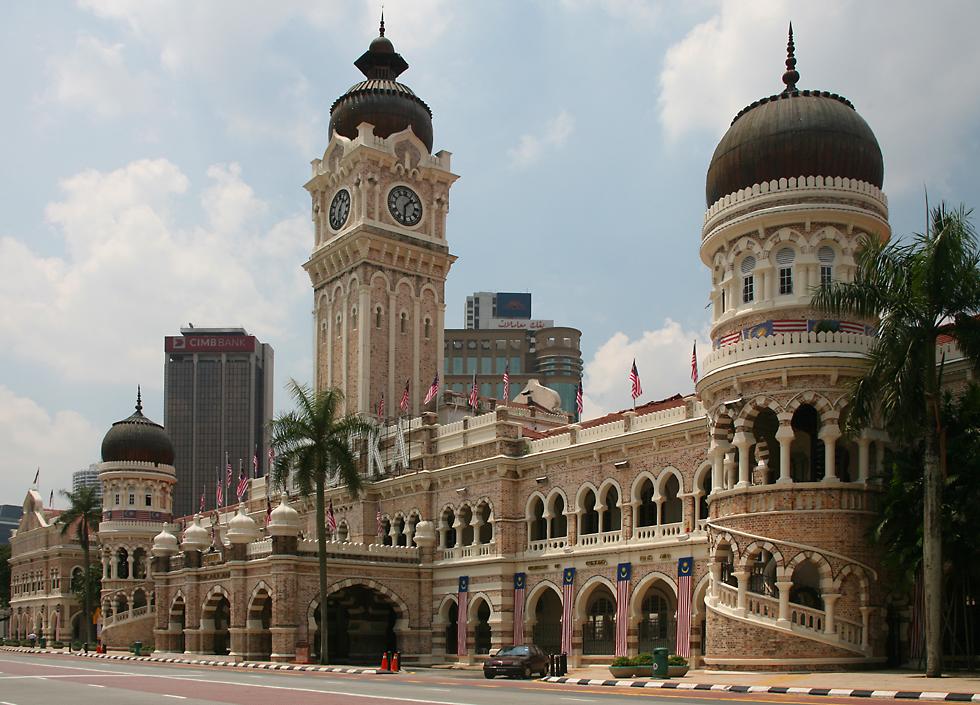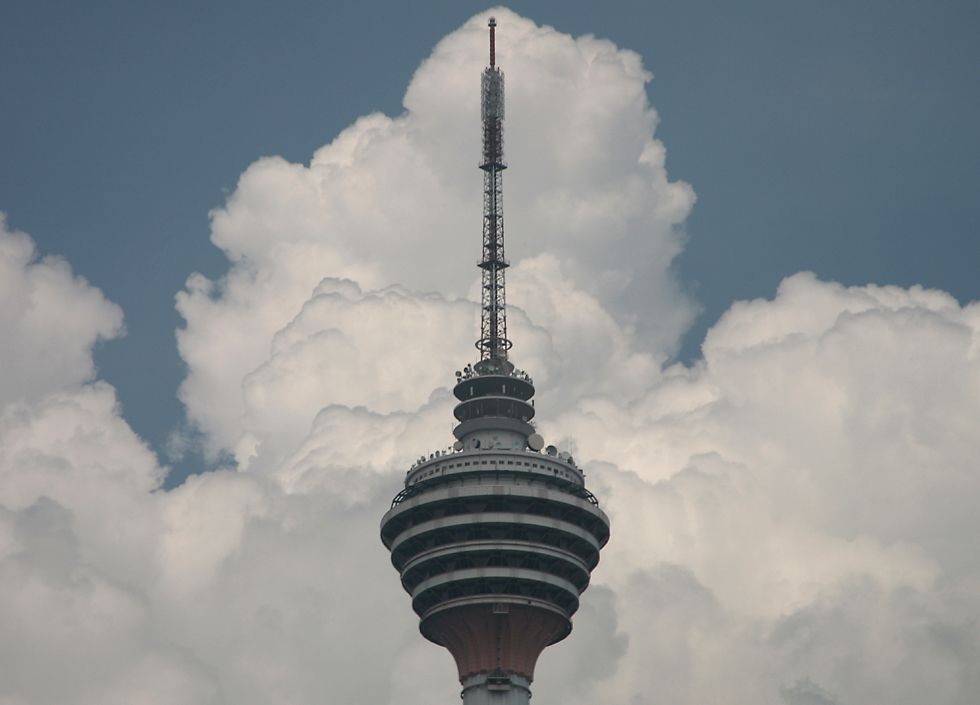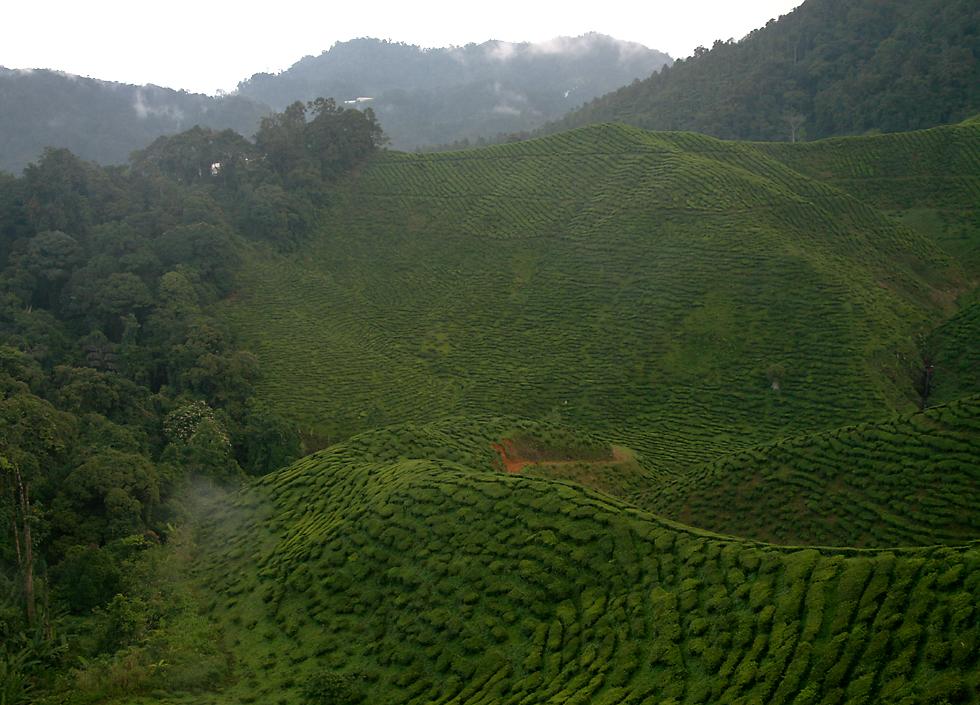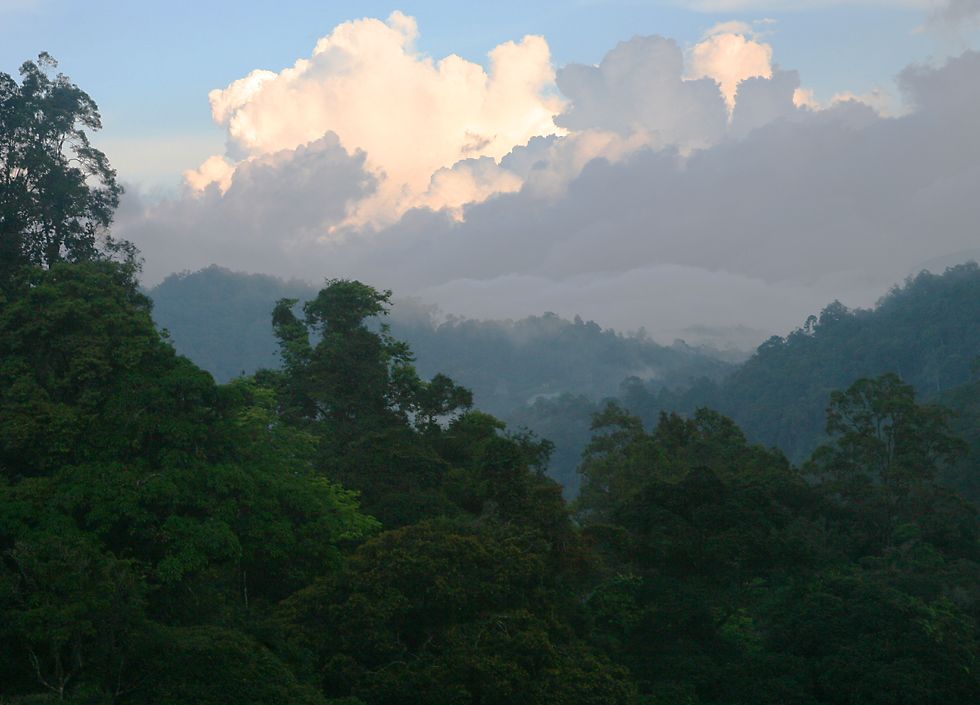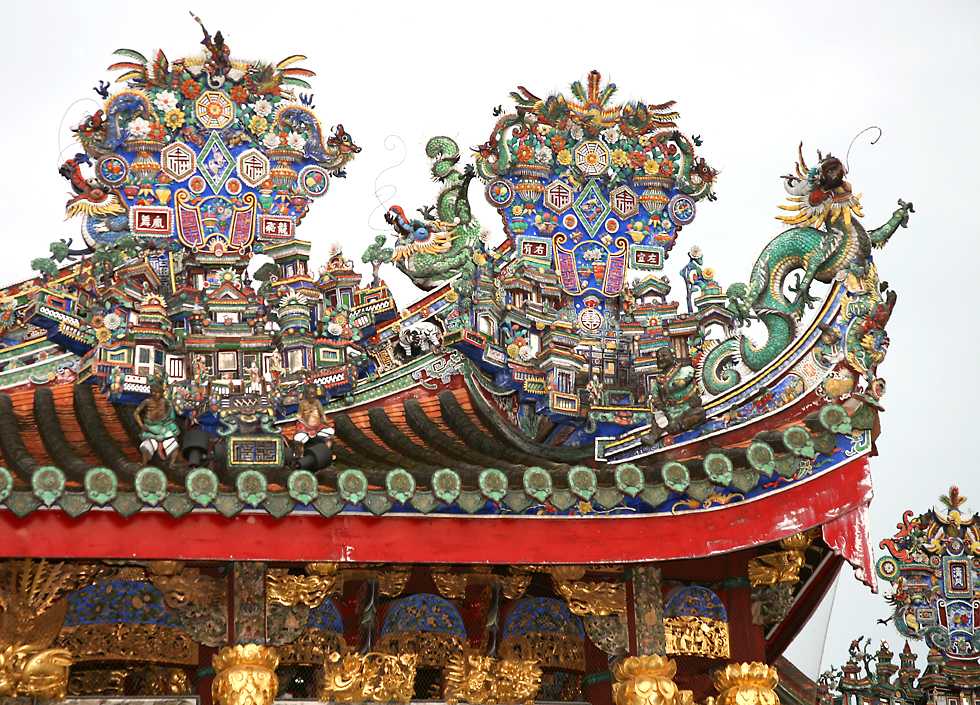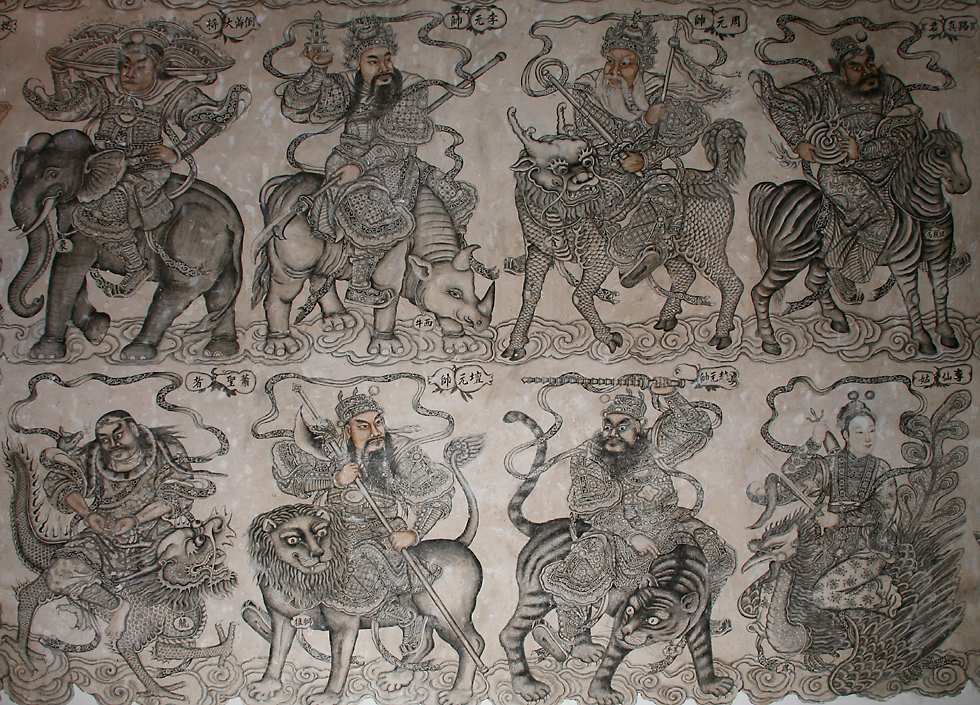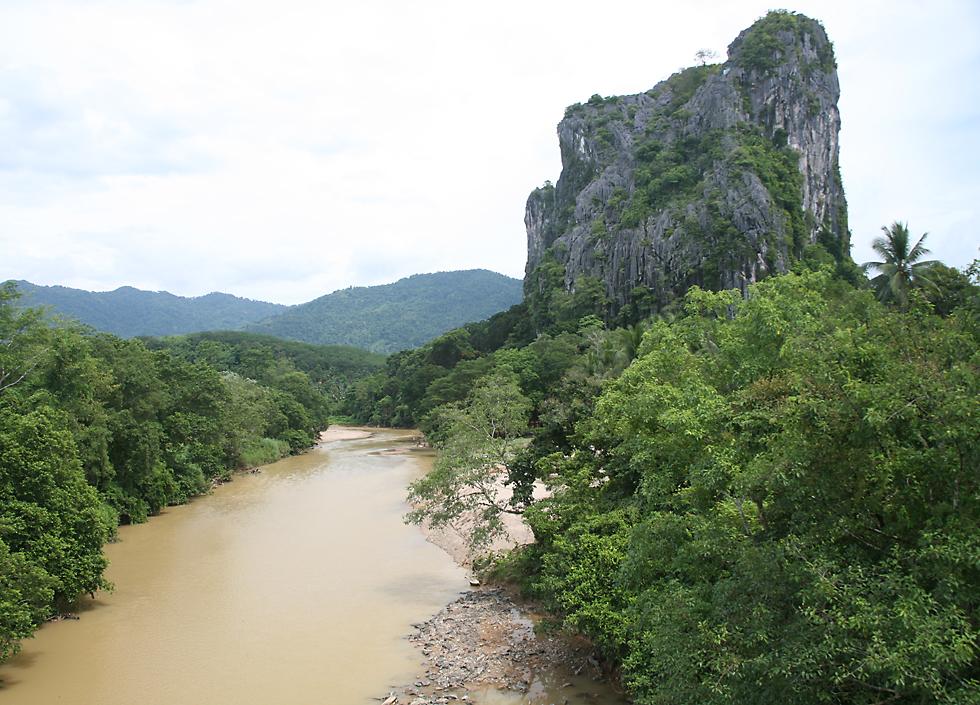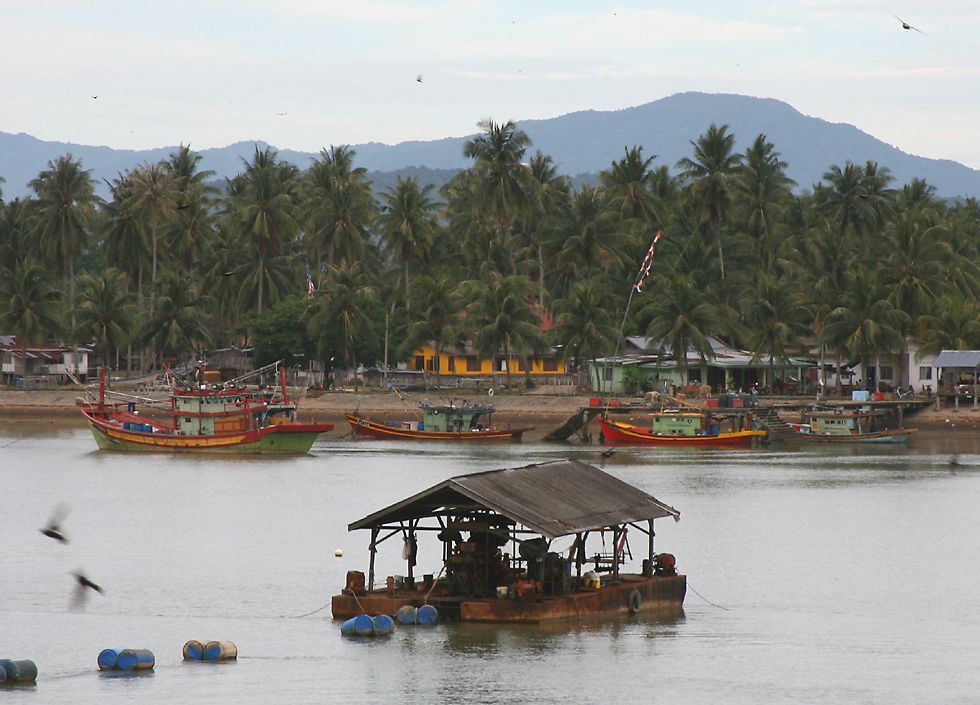Highlights of Peninsular Malaysia

Malaysia is divided into two main parts, the Malay Peninsula south of Thailand, and the two states of Sabah and Sarawak on Borneo. I've never been to Sabah or Sarawak, though in 1994 I did spend a month in Brunei, a tiny country which sits between them; later I crossed over from Singapore to the Malaysian city of Johor Bahru. The most striking thing I saw that night was a medicine man on the street extolling the medicinal virtues of snake blood to a large group of onlookers. Almost exactly fourteen years later I returned to Johor Bahru and sure enough there was a medicine man extolling the virtues of snake blood to a crowd! This time there was another peddler of dubious medical advice next to him with bamboo implements designed to suck the poison out of your body right through your skin! Beats having to do proper work, I guess. |

The first time I visited Malaysia I only had a week to drive around the entire peninsula, so I decided to bypass the west coast town of a Melaka. This time I spent a couple of days there, but I was rather underwhelmed, though the town square with its fountain and colonial Dutch church were worthy of a few photos. |

Here is the roof of the Cheng Hoon Teng temple, with a traditional style painting under the eaves of gods and goddesses doing battle. The name translates as "Green Clouds" temple, it's dedicated to Guanyin the goddess of mercy. It was built in 1646, making it Malaysia's oldest Chinese temple, with most of the building materials and artisans being imported from China.
|
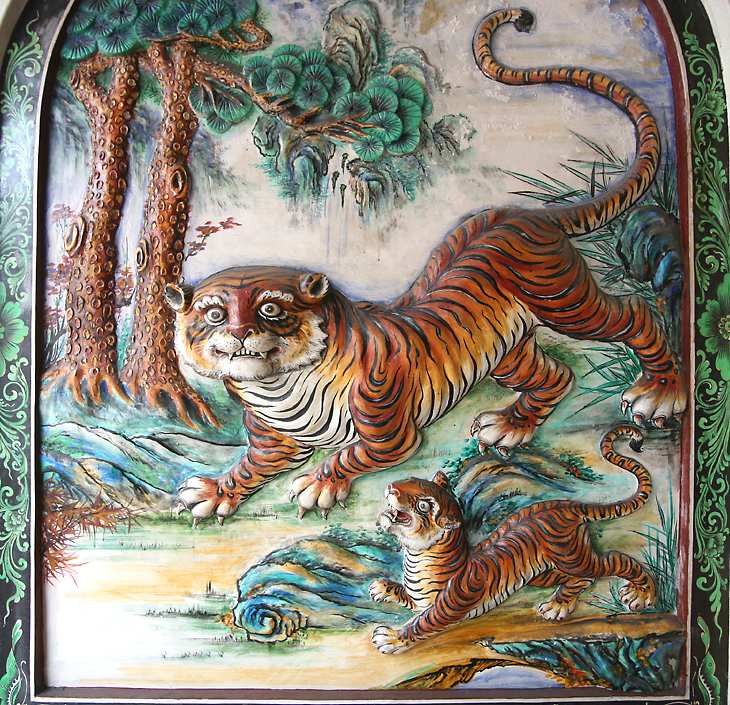
Here's a typical Chinese painted relief, I also saw this same theme of a tiger cub with its mother in Penang. |

Much of the rest of Melaka belongs to the Disneyland School of historical attraction, meaning artificial developments like this giant waterwheel on the riverside, an artificial fort under construction a hundred meters behind it, a fake galleon further down the river, and the large elevated ride which you can see in the background. It's all good clean fun for very young children, perhaps, but disappointing for anyone wanting to see real history. |

And here's Masjid Jamek photographed from almost exactly the same angle in 2008! The rivers are about the same, but I didn't see any fish this time. As you can see, there's been a lot of growth, both of the palm trees which now block the view of the mosque, and of the skyscrapers in the background. On the right hand side and center of the photo you can see the new and very appropriately named Masjid Jamek Light Rail Transit (LRT) station. |

Like most British colonial cities in Asia, Kuala Lumpur has a large padang, or open grassed area, at its center. It's an essential requirement to allow English expatriates to play cricket, and by this means to retain their Englishness, and avoid the terrible fate of "going native"! Since Malaysia became independent the padang has been called Merdeka Square, which means Independence Square. The cricket pitch is still there but it now shares the square with a 100 meter tall flagpole. At one time this was the world's tallest freestanding flagpole, though that honor now belongs to a 133 meter monster in Turkmenistan; the absolute tallest flagpole is a 160 meter mast in North Korea. |

You can see the Islamic-style architectural motifs on the bottom of the main structure, indeed this whole part of the tower is said to be based on a muslim spinning top. The day I visited there were terrific thunderstorms blowing through the area, with lightning bolts hitting many of the skyscrapers around the tower, and the tower itself taking direct strikes every couple of minutes with a huge bang as the lightning was safely conducted down to earth. I enjoyed the whole spectacle while having a refreshing drink at the base of the tower, clear of the rain but outside the building as others huddled inside like scared rabbits! I wasn't going to miss out on one of nature's free and spectacular light-and-sound shows, which no doubt would have cost lots of money if it had been put on by humans. |

Here's a view from the tower. I'm not sure what the domed building is, perhaps a sports arena, but at the top and left you can see a large and attractive mosque, modern residential towers in the center, a colonial era church at the bottom of the photos, and an LRT train snaking its way across from the bottom, right. |

As well as the world's longest (and in my humble opinion, stupidest) building, Mahathir decided that having the world's tallest building would be a great boost to Malaysian self-esteem, spurring the nation on to achieving his grandiose goals. At 452 meters, the Petronas Towers held onto the world record from 1998 to 2004, until overtaken by Taipei 101 in Taiwan, however they're still the world's tallest twin buildings. The spires are counted as an integral part of the building, unlike telecommunications antennas, however the Petronas Towers only has 88 occupied floors compared to the 110 floors of New York's World Trade Center and Chicago's Sears Tower, which has occupied floors above the highest occupied floors in the Petronas Towers. As with the Kuala Lumpur Tower, the Petronas Towers also have a basis in Islamic art. A plan cross-section through the building follows a frequent motif in muslim art called the Rub el Hizb, two squares with the same size and center point, but rotated 45 degrees from each other - the square equivalent of the triangular Star of David. In this case, circular sections were added at each vertex, to provide more office space. Just visible in this photo is a slogan at the entrance to the towers, "Satu warisan, satu matlamat", meaning "one legacy, one destiny", an encouraging statement of Malaysia's acceptance of its unrequested racial diversity, and desire to make the most of it. |

It's possible to visit the two storey skybridge between the 41st and 42nd floors, however I didn't bother because at 170 meters above the ground they're quite a bit lower than the view you get from the Kuala Lumpur tower, and you have to get there early to get one of the 1700 free tickets which are issued every day. |

The last time I was in Malaysia I didn't make much effort to get out to natural places or photograph the wildlife, though I did spend 20 minutes standing in a stream on the island of Penang photographing an extraordinarily attractive dragonfly, only to find out later that I hadn't loaded the film properly and therefore didn't get any shots! Since that time I've developed a passion for wildlife photography, so this time around I made sure to get out of the cities and into some natural areas. Unfortunately, in its headlong rush for development, Malaysia has assigned a low priority to the environment, so there aren't as many national parks as other countries in the region, like Thailand. However, not too far from Kuala Lumpur are the Cameron Highlands, blessed with a cooler climate than the lowlands. There are several nature walks here which take you into some forest with the hope of seeing animals, though anyone hoping to see a tiger, an elephant or anything else of any size is likely to be disappointed! There's some nice jungle scenery on the drive up, and the Iskandar waterfall which you see here is a very popular stop both for local and foreign tourists. I spent several minutes here chatting with an elderly Malay from Melaka who was here visiting with his extended family. The old road up to the Cameron Highlands is steep and winding, and I was plagued with bad weather on and off during my whole time in the country, including this stretch, so it took a few hours to get up there. I've driven quite a lot in third world countries so I know to be cautious, which saved me from some serious problems when a dump truck coming down the hill failed to negotiate a corner and came hurtling over onto my side of the road. Fortunately I'd already decided that he was driving too fast to make the corner in the wet conditions, so I'd stopped in the road some distance from the corner, thus avoiding a collision. This might have been the end of the matter, but in order to promote international understanding and to express my opinion of his driving I did activate the audible emotion indicator which had been thoughtfully fitted to my rental vehicle. I also communicated by executing certain hand gestures which I hoped would be understood across the cultural and linguistic barriers. |

There are thirteen or fourteen marked trails in the area, but since I was only there two days I opted to spend almost all my time on trail four, with one excursion to trail nine to see Robinson Falls. Unfortunately there was a lot of trash around Robinson Falls so I didn't even bother taking a photo and Parit Falls on trail four had the color and smell of sewage, so I didn't bother photographing it, either. But I was more than happy searching out the wildlife, particularly frogs, snakes and insects like this caterpillar, whose body looks like quite reminiscent of the eastern tent caterpillar of North America, but whose moveable shoulder embellishments are like nothing I've ever seen before! Although I was always looking for snakes and other reptiles, it still came as a surprise to find three of them in this cool and wet environment, and frustrating that they were the only snakes I found in my whole time in the country! You can see more of these Cameron Highland critters on the Wildlife of Malaysia page. |

The island of Penang became Britain's first colony in the Malay Peninsula when Captain Francis Light took control in 1786. The British quickly established it as a trading settlement, and later started similar settlements at Melaka and Singapore. You can drive to Penang from the mainland across a huge bridge which is 13.5 kilometers long, making it one of the longest in Asia. Penang is an interesting place, with colonial remains like Fort Cornwallis, the original defensive position estblished by Captain Light. There's also the later town hall and the Victoria Memorial Clock Tower shown here, which was donated by a Chinese millionaire and stands 60 feet high, one foot for every year of Queen Victoria's reign at the time of her diamond jubilee in 1897. Unfortunately, after going around the colonial district the weather closed in on me and it started pouring with rain. It's a real shame, because there's an excellent funicular railway up Penang Hill with excellent views over the town and the bridge, as well as an interesting Hindu temple and mosque and large botanical gardens. I went up the hill in 1994 but this time there was no point, because low cloud was obscuring the top. I didn't have enough time available to wait out the bad weather or to drive around the island or even to revisit the snake temple (Temple of the Azure Cloud). I guess I'll just have to go back again some time! If I do return then I'll be sure not to stay at the Blue Diamond hotel. Cheap it might be, but there were mosquitos (a normal occurrence in the tropics), bed bugs (a first for me) and worst of all a rock band which played until 2:30 in the morning! Unfortunately my ear plugs were no match for the band and its famous vocalist "Legs", and I'd left my mosquito net in my car, which was locked up in an inaccessible gated parking lot. |

If you can visit only one place in Penang, then it should definitely be Khoo Kongsi, the community meeting house for the Khoo clan. There's more than one building here, and they serve more than just the purpose of meeting. In colonial times different clans, united by family ties, developed self-contained communities within the larger city. These communities contains dozens of residential buildings, as well as shops and offices for other commercial activities, all within a large area hidden away with only a few inconspicuous portals to the larger city. This arrangement provided defense against incursions by criminal gangs and the threat of hostility from the local population. Within the community, art and culture flourished, nowhere more so than in the Khoo clan's territory, culminating in the construction of the magnificent Dragon Mountain Hall. This hall was originally built in the 1890s, but then had to be rebuilt in the early 1900s after burning down. Some people say that it was struck by lightning, a sign of the gods' displeasure because of its opulence and resemblance to the emperor's palace in Beijing. The present hall is smaller than its predecessor, but it's still a magnificent display of artistry and craftsmanship, as you can see from this roof ornament, showing clan life along with the dragons and other mythological beasts which commonly decorate Chinese buildings. |

The intricacies of the ornamentation around the elevated entranceway out-baroque even European baroque architecture. |

There are several other murals and drawings inside, including this one showing court life back home in China. If you look closely you can see numerous details like courtiers, dragon dancers, musicians and archers on horseback, all within a walled enclosure with carp-filled ponds, courtyards and pavilions. |

Taman Negara literally means "national park", and it's the premier national park in the country. Like the roads and other aspects of the economy, entry to the park and accomodation is in the hands of private interests, which means that you pay premier prices to stay there, too. I paid 60 ringgit (about $US20) to stay in an eight person dormitory, compared to about 20 ringgit to stay in a private room with shower in a cheap hotel in the cities; luckily for me, I was the only person in the dormitory, so it wasn't too bad, and being inside the park allowed me to go out into the jungle at night, when many of the most interesting inhabitants can be seen, as well as extras like bioluminescent mushrooms. Unfortunately, much more of the country is given over to palm oil plantations than to nature reserves, with the result that there are only small remnants of original forest left. From the air it's possible to see square kilometer after square kilometer of the plantations, and on the ground it's inevitable that you'll drive through them. In this photo you can see the harvested palm oil nuts lying on the side of the road, from where they'll soon be gathered for oil extraction at the smoke belching factories which blight the countryside. |

Although June is supposed to be one of the driest months of the year, the rain I experienced during this trip meant that the visibility wasn't as good as I might have hoped. On one wreck dive in the channel between Kuala Besut and the islands there was so much sediment floating in the water that it wasn't worth taking photographs, and I had to work hard just to avoid getting separated from the rest of the group. The dive operators where I was staying on the smaller island of Perhentian Kecil are geared more towards backpackers than hard-core underwater photographers like myself. However it was still a worthwhile trip, with some nice photos like this green turtle with a pair of sharksuckers (though it took a lot of effort to edit all of the specks from the photo). As a bonus I got several good photos of reptiles at night-time, including flying geckos, tokay geckos and forest crested lizards. |
